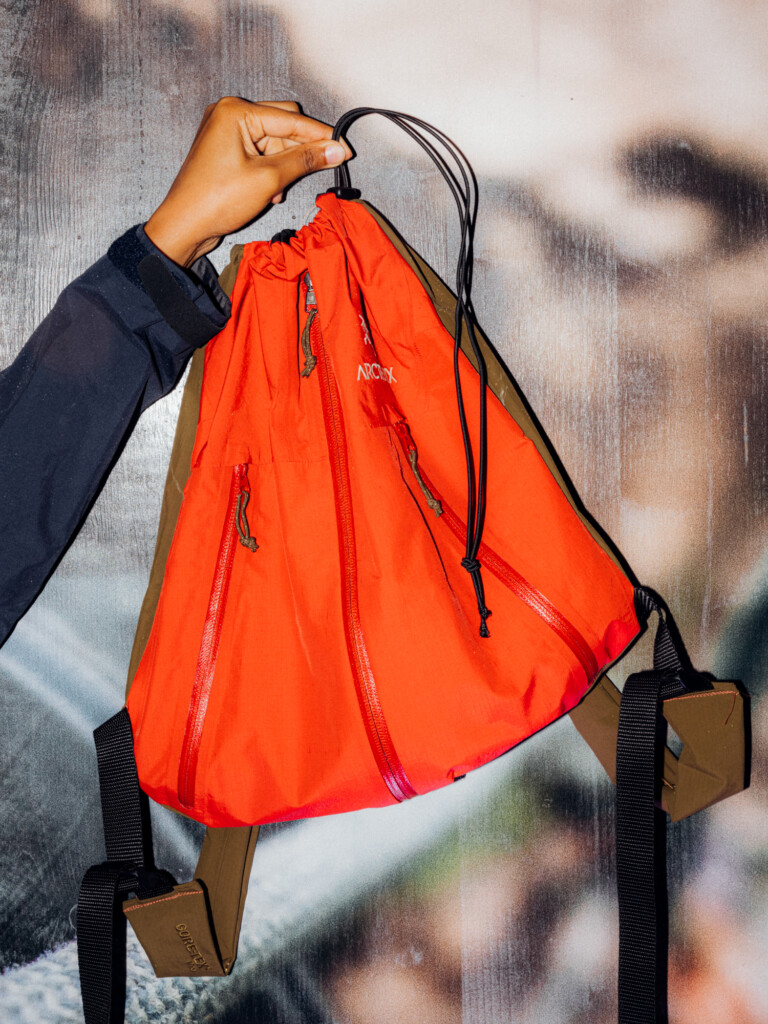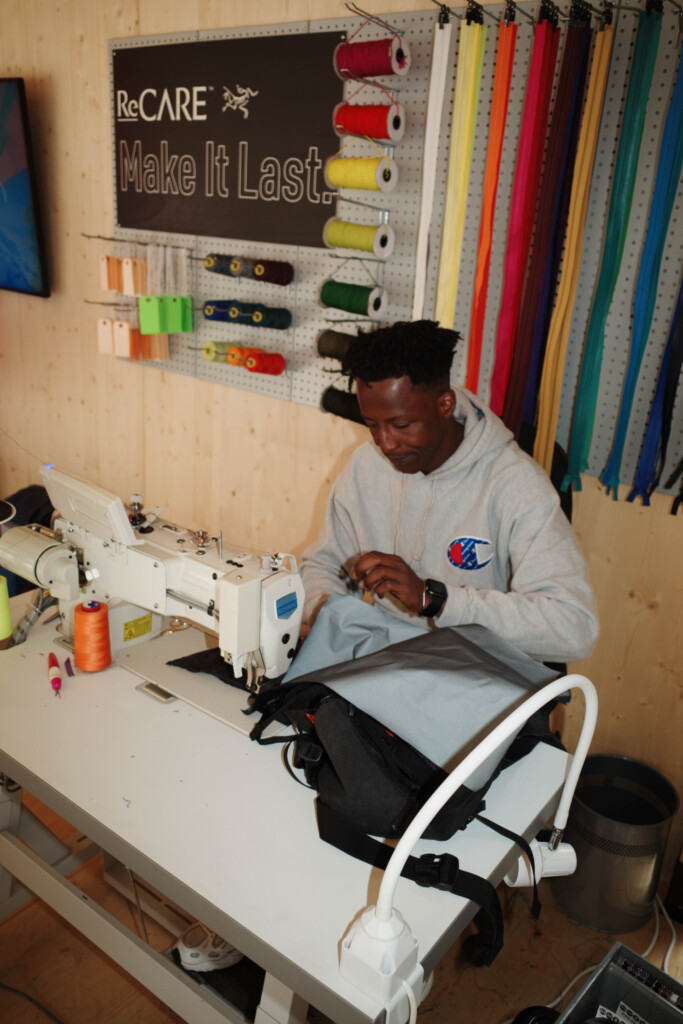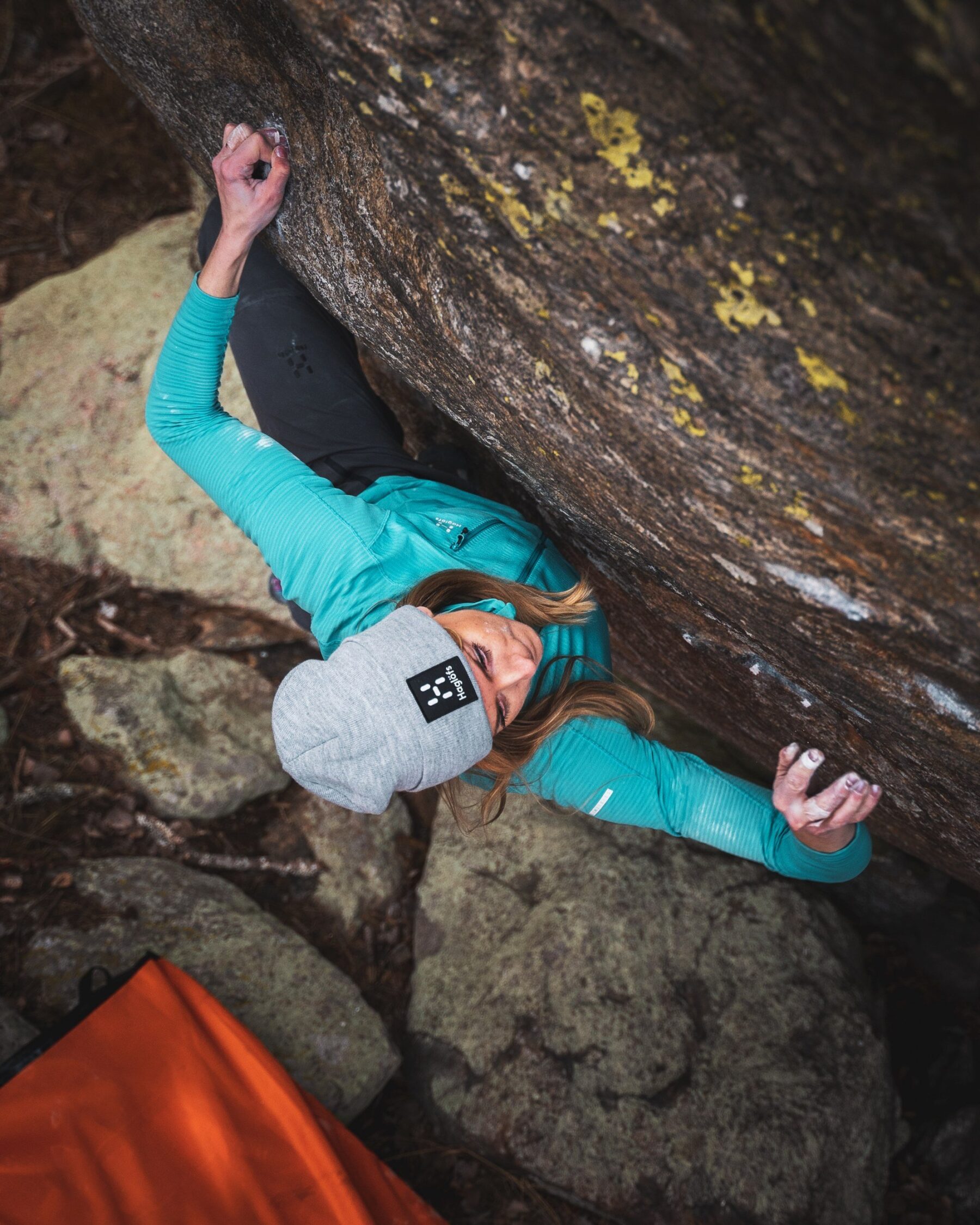The annual Arc’teryx Alpine Academy event in Chamonix-Mont-Blanc is attended by hundreds every year. With the effects of climate change on the glaciers, mountains and wild spaces that facilitate these activities and events rapidly and dramatically accelerating in recent years, brands and events organisers have a responsibility, now more than ever, to facilitate change.
BASE writer Hannah Mitchell went along to the event in June this year, taking part in clinics and joining in with the ReBIRD experience in the Alpine Village. Through the ReBIRD program, Arc’teryx aims to educate consumers and event participants, engaging them with more environmentally-friendly practises when it comes to outdoor kit, reframing sustainability to mean more than just a word on a label. Here she discusses how the brand are transitioning towards circularity in production and retail through engagement, transparency and awareness.
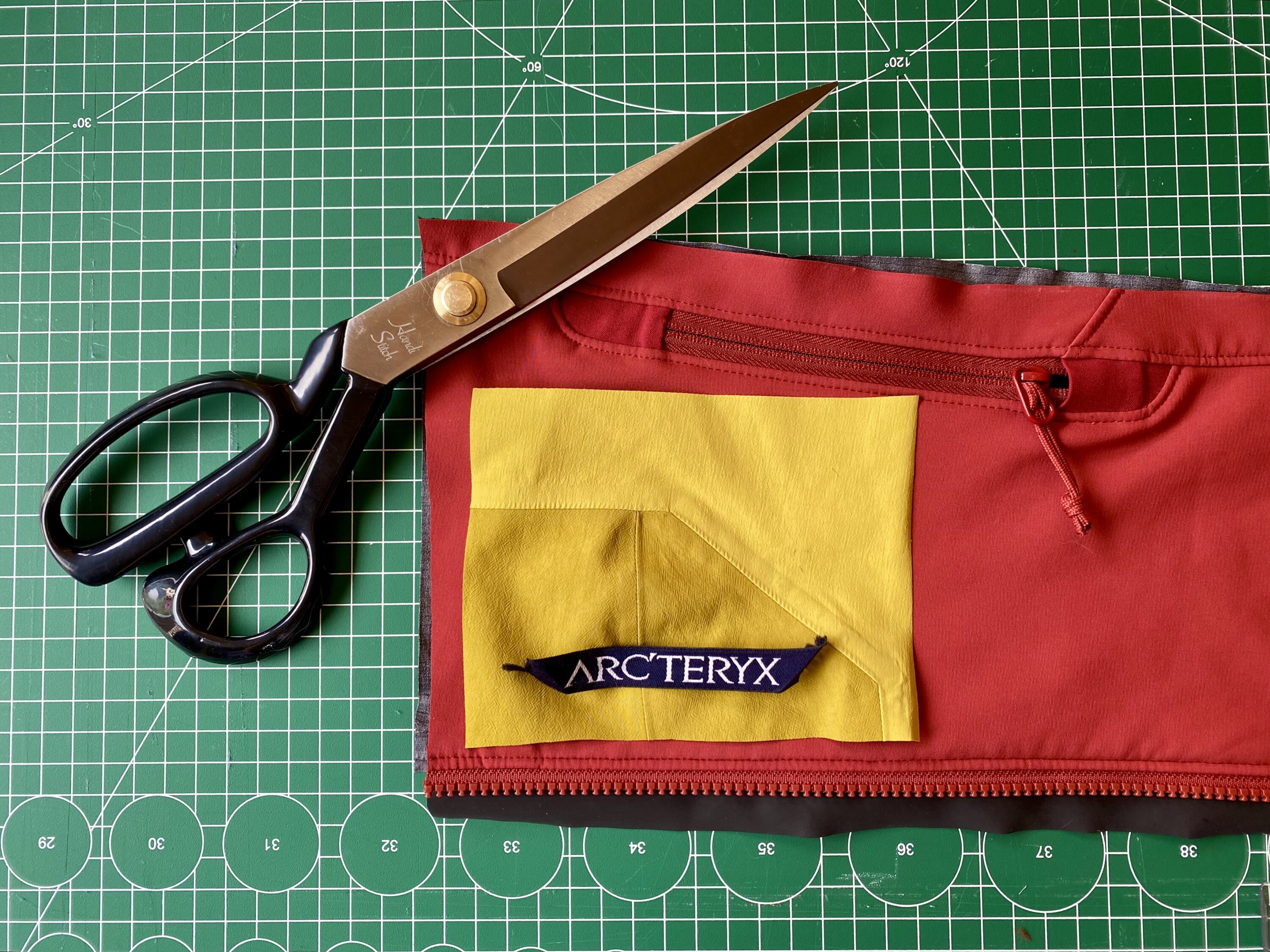
Work in progress at the ReCUT stand at the Arc’teryx Alpine Academy © Hannah Mitchell
My cynicism regarding words like ‘up-cycling’, ‘sustainable’ and ‘green’ when used in a commercial or retail context is widely known among my friends. Not forgetting of course, that catch-all, feel-good prefix, ‘eco’, which is the subject of much of my disdain and a pet cause for eye-rolling. Basically, I’m really fun at parties.
Joking aside (I am actually quite good fun), whilst I do have a healthy wariness of environmental promises that seem too good to be true, I’m a huge cheerleader for the imperfect, the incremental, and for those businesses and brands who hold their hands up and say ‘look, we’re not perfect, but we’re trying to do better’. Let’s be honest, humankind didn’t warm the world up overnight, so we’re not going to solve our climate crisis all that rapidly either. That isn’t to say that we should take our foot off the (renewable energy fuelled) pedal either – the climate crisis is exactly that, a crisis, and we can’t trivialise it.
It’s easy to feel overwhelmed, guilty or confused when it comes to our choices as consumers, particularly as outdoorspeople. At the risk of sounding preachy, we all should be offering some degree of consideration to the effects of our purchasing choices on the environments that we run, climb, swim, ski, surf and fly in. Full disclosure: I am by no means saintly. I’ve got my fair share of PFAS lurking in my wardrobe, and whilst I am a stoically ‘make do and mend’ kind of a girl, I do buy new occasionally, I don’t always research the origins or chemical content of every element of my gear, I drive a diesel van to go climbing and I travel by aeroplane from time to time. The problematic nature of all those things weighs heavy on my conscience, but being aware of my impact empowers me to try to do better, to educate myself and to engage with solutions. And THAT, I think, is a good place for everyone to start.
It’s easy to feel overwhelmed, guilty or confused when it comes to our choices as consumers, particularly as outdoorspeople
Back to those words that make me grimace, ‘recyclable’ or ‘recycled’ can get in the bin too. We sort-of know that our recycling systems are broken to a degree, many recyclable materials have been rendered worthless by humankind’s relentless consumption over time. Yet still, when something is branded with that little green arrow sign that suggests some good will come of it eventually, we buy, and we feel vindicated in doing so. It’s making things worse. In relation to outdoor brands, there has been a really evident drive towards producing more sustainable textile options, manufacturing processes, repurposing offcuts previously destined for landfill, and towards garment repair schemes and end-of-life solutions. I do have to ask though, are these ranges, schemes and buzzy, feel-good campaigns just another clever branch of faux-environmentalism, cleverly capitalising on the consciences of well-meaning outdoorspeople who want quality kit for their activity of choice, but genuinely want to lessen their impact too?
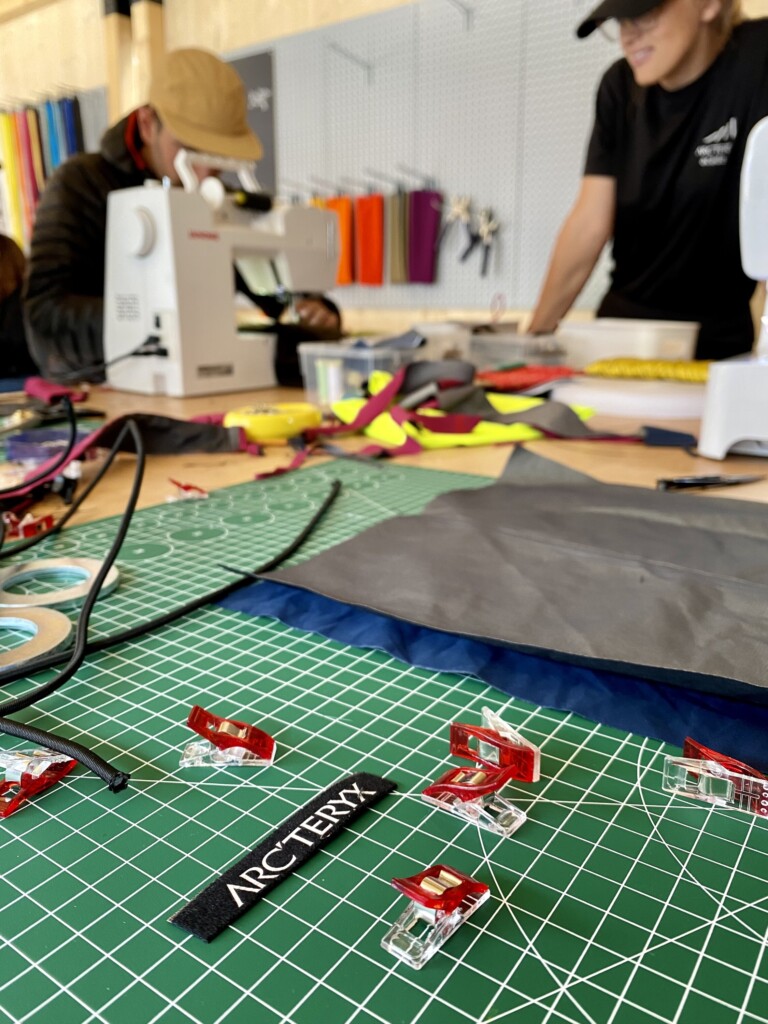
Fabric scraps ready to be re-purposed © Hannah Mitchell
This year, I was invited to attend the Arc’teryx Academy in Chamonix. The event offers an enormous number of guide and athlete-led clinics focussing on mountaineering, trail running and rock climbing over four days. This year, more than 500 participants took part in clinics, with even more joining in with free activities back in the Alpine Village. One feature that I was particularly interested to learn a little bit more about was the ReBIRD experience. ReBIRD (the BIRD part pertaining to Arc’teryx’s distinctive bird logo) is the brand’s response to the outdoor industry’s shift towards circularity and more sustainable practises, and the program comprises three aspects which are described as:
ReGEAR
This element of the program involves the return or trade-in of ‘compromised’ used gear that is either repaired and restored for resale, which keeps items in use for longer, spreading the environmental impact of its production over a greater period of time.
ReCUT
When an item is at the end of its life or unrepairable, it is deconstructed so that its elements can be used to repair other items or to make new ones. Redirected remnants or fabric samples (using excess raw materials like Gore-TEX) and unusable garments are crafted into unique, statement pieces, reducing waste.
ReCARE
Empowering consumers to care for their own kit properly to prolong its life, ReCARE is Arc’teryx’s support service that offer guidance on minor repairs, re-proofing and cleaning.
Over the long weekend, queues for workshops and sessions at the stand snaked across the square. The ReCARE experience, in partnership with Gore-TEX, offered guidance on how to maintain outdoor gear in order to prolong its lifespan, with advice on washing and waterproofing. A repairs station offered the opportunity for people to drop off their Gore-TEX gear (of any brand) to be repaired for free by experts.
Being in the industry, I’ve seen a few of these pop-up repair shops hosted by various brands at outdoor events recently, and believe them to be commercially, pretty clever, but also an applaudable initiative. Many brands now offer repair schemes, but all too often they include brand-specific caveats, postal charges and fees for repair that in today’s financial climate will quite likely drive consumers to simply replace their damaged garment with a cheaper option – even if they’d really rather do the more planet-friendly thing. It’s sort-of like telling people that eating a healthy diet is better for them, but then pricing them out of the fruit and veg section so that they are forced to buy a processed ready meal. Free, in-person experiences like ReCARE go a long way to engaging consumers with the repair process too, and when we’re engaged, we’re far more likely to absorb the meaning behind the act. It’s not just about patching up jackets and fixing zips, but reducing the 92 million tons of textile waste that ends up in landfill worldwide every year.
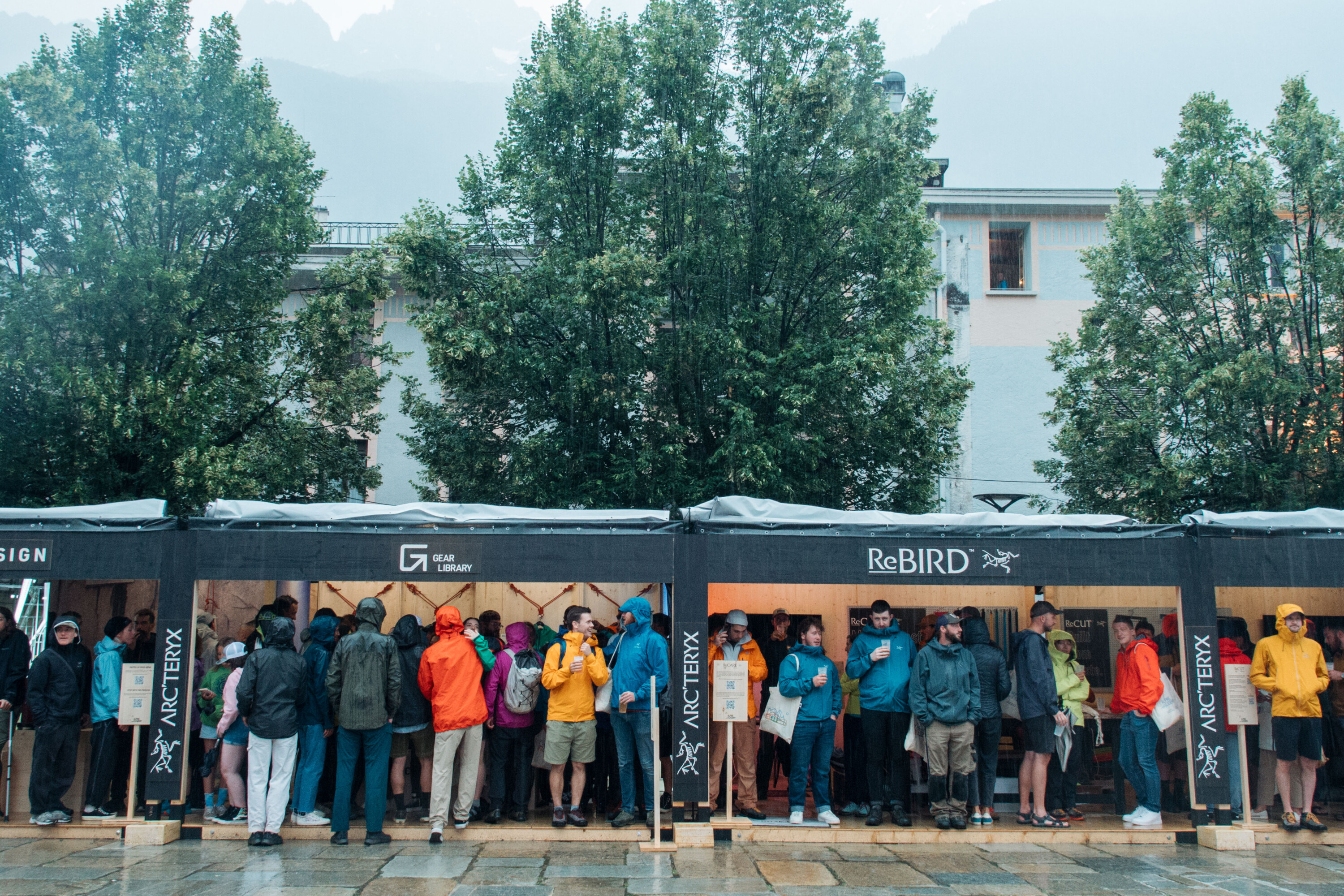
The ReBIRD experience in the Alpine Village © Arc’teryx/Georgie Day
Undoubtedly the most popular features of the experience were the ReCUT workshops that took place daily. Led by expert apparel and equipment designers from Arc’teryx, participants were invited to delve into a pile of factory offcuts, end-of-life garments and prototype textile swatches which they would then craft – with the help of the pros – into a bespoke bag, pouch or pencil case. Naturally, an activity like this is going to attract attention, and believe me when I say that I dove into the pile of scraps like an overexcited child! Crafting something out of cut-up waterproofs destined for landfill while chatting to infinitely cooler people than me about designing gear is pretty fun, and again serves that all-important purpose of engaging people with the real reason for doing so. It opens up a dialogue and spotlights a problem that folk might otherwise not know existed. Oh, and I walked away with a very cool bag to boot.
Balancing a capitalist model with effectively telling people to buy less stuff is something Arc’teryx, like many brands, are currently wrestling with
My fellow cynics might well be asking how exactly this is helping on a larger scale, given that the seemingly-enormous pile of scraps that were put to good use over four days is a relatively small amount when you consider that the average person will generate 11kg of textile waste per year. Well, it harks back to that bit earlier about imperfection, incremental change and above all, transparency. With the fashion and apparel industry producing over 100 billion garments annually, three out of five of those garments will end up in landfill, and Arc’teryx understand that they are part of this problem.
So what’s a brand to do? Balancing a capitalist model with effectively telling people to buy less stuff is something Arc’teryx, like many brands, are currently wrestling with. It’s also a matter of time; something we’re in short supply of when it comes to slowing and reversing the effects of climate change, but something that is needed for brands to fully transition to a more circular way of operating. Circularity in terms of outdoor brands, means designing waste and pollution out of systems to respect the limits of a finite planet. That’s not a quick fix, but it’s what Arc’teryx are aiming to do through design-led problem solving.
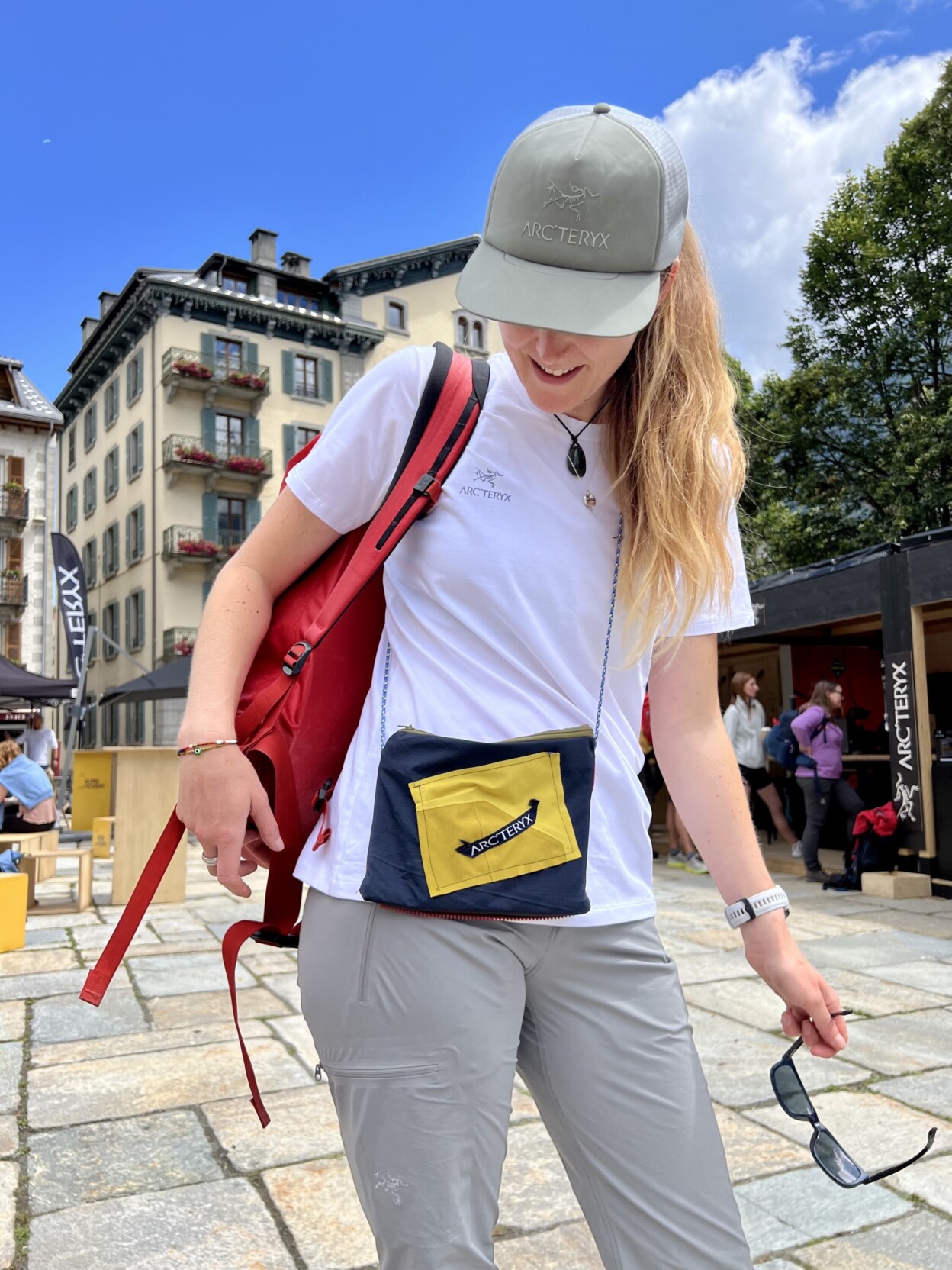
The finished product, made entirely from end-of-life garments and sample scraps © Hannah Mitchell
The ReBIRD program de-stigmatises the word waste, seeing it as a resource to be utilised rather than discarded. The emphasis on repair and availability of a resale and buy-back system is a key feature of the brand’s movement towards circularity. With 65% of the environmental impact of one Arc’teryx jacket coming before it even reaches the rack, the aim is to enable the consumer to keep that jacket in use for longer, therefore spreading its impact over time.
One thing I noticed as I chatted with the Arc’teryx team over the weekend was the almost complete absence of those words – the eye-rollers – in relation to the ReBIRD program. Circularity was more the word de jour, but I can get on board with that. In the same way that we have to applaud individuals for making small changes, choosing the lower-impact options where possible and practicable, for their imperfect activism and for broadening their awareness, I think we have to recognise what brands are doing too, and acknowledge those that are holding themselves to account. Short-term solutions like repairing a zip rather than replacing a jacket, and engaging communities with the concept of repurposing through activities like ReCUT are the small cogs that help to power the larger machine. Durability and longevity of design and science-led solutions that help to create systemic change in outdoor brands are that machine. We all know that the most sustainable purchase you can make is no purchase at all. Circularity – unlike those other words that are often coined to convince people to feel better about buying more – doesn’t mean not buying at all, but buying less, buying better and keeping for longer, and is a more realistic standard for outdoor brands to aspire to.
You can check out Arc’teryx’s sustainability manifesto, climate reports and commitments here, and read more about the ReBIRD program here.
More articles by this author:
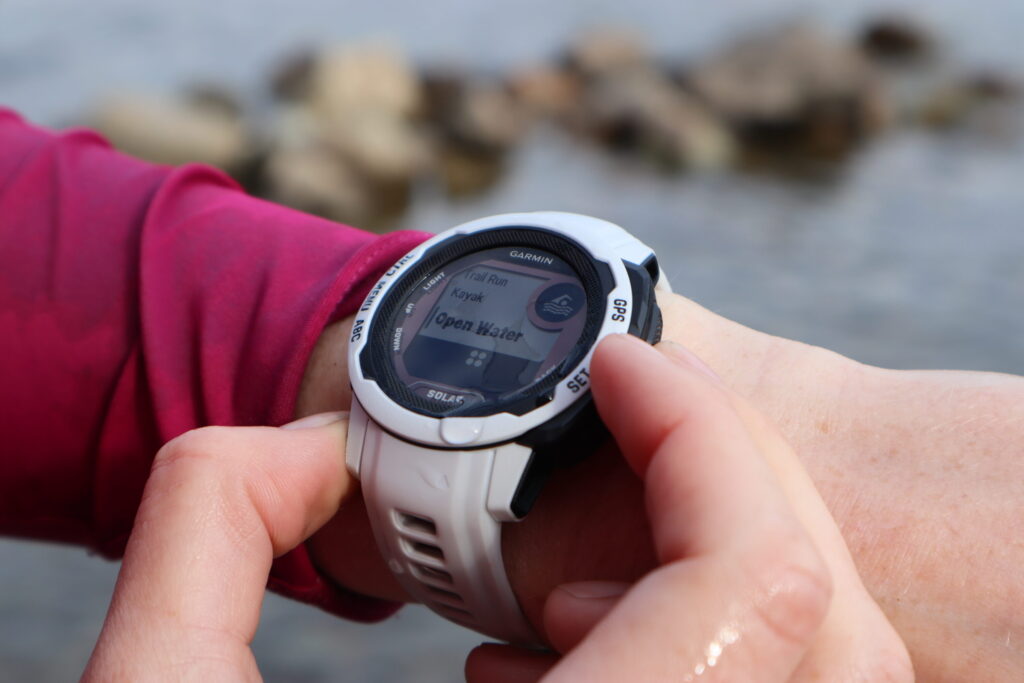
Review • Hannah Mitchell • November 13, 2023
Review: Garmin Instinct 2S Solar
Exceptional battery life and extensive activity tracking and metrics – the Instinct 2S Solar has a lot to offer in a neat, nifty little package.
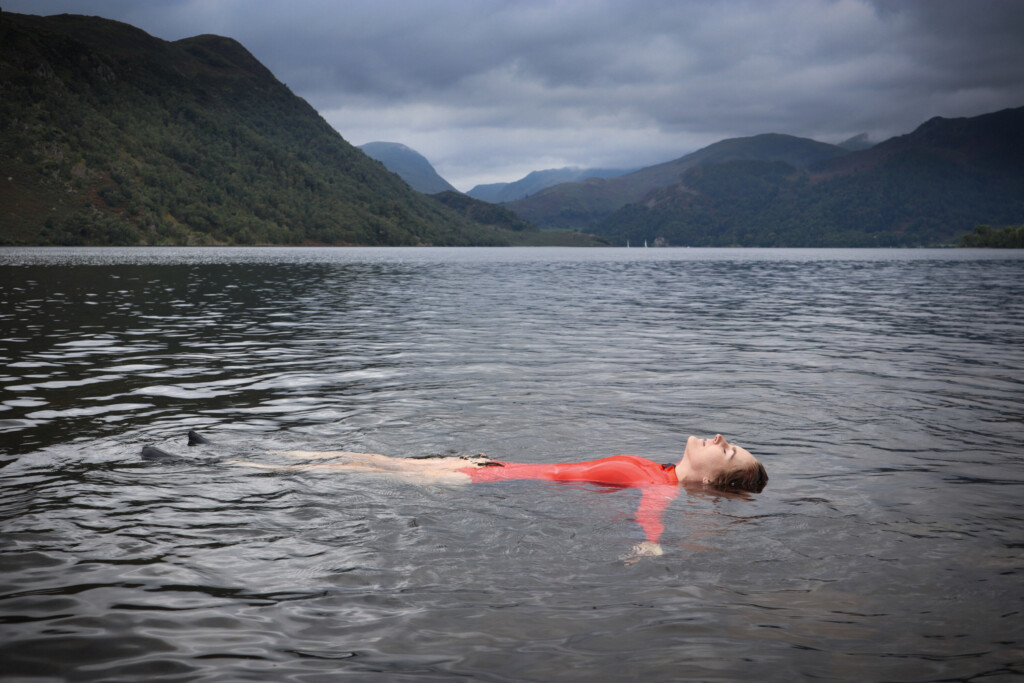
Review • Hannah Mitchell • October 24, 2023
How Good Is Finisterre’s New Wetsuit Rental Scheme?
Finisterre’s scheme aims to improve accessibility to the sea by offering a more sustainable way to wear their Yulex surf and swimwear range
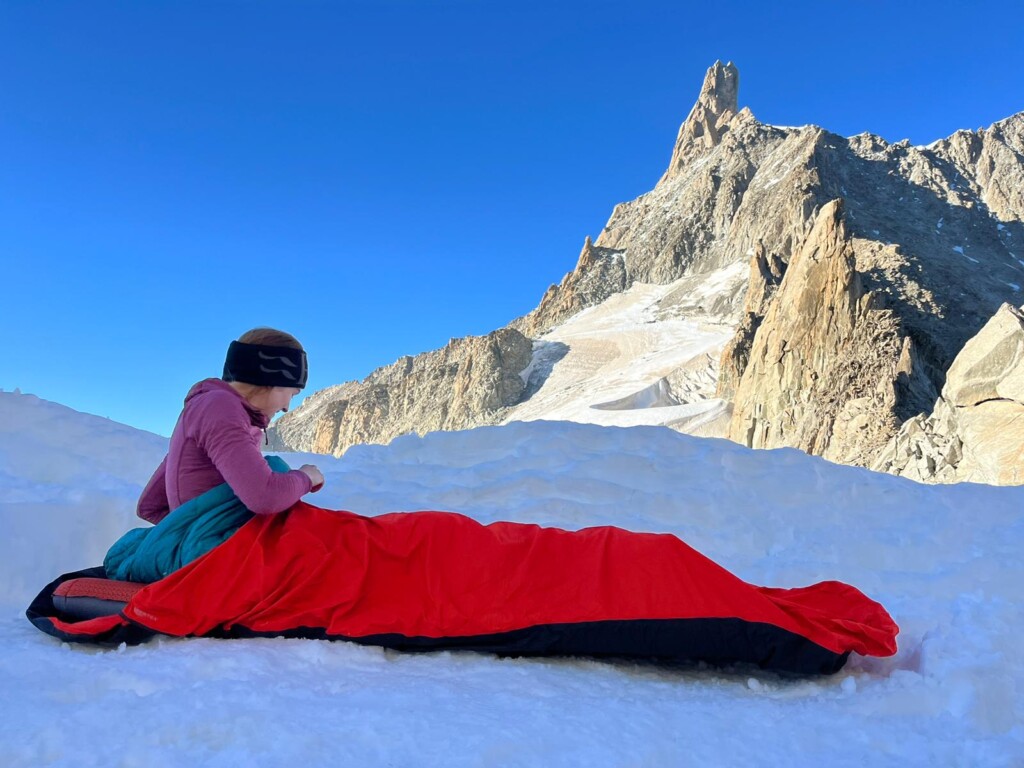
Review • Hannah Mitchell • October 04, 2023
Review: Rab Ionosphere 5.5 Sleeping Mat
Rab’s Ionosphere 5.5 guarantees a warm, comfortable and quiet night for alpine bivies and camping in extreme conditions
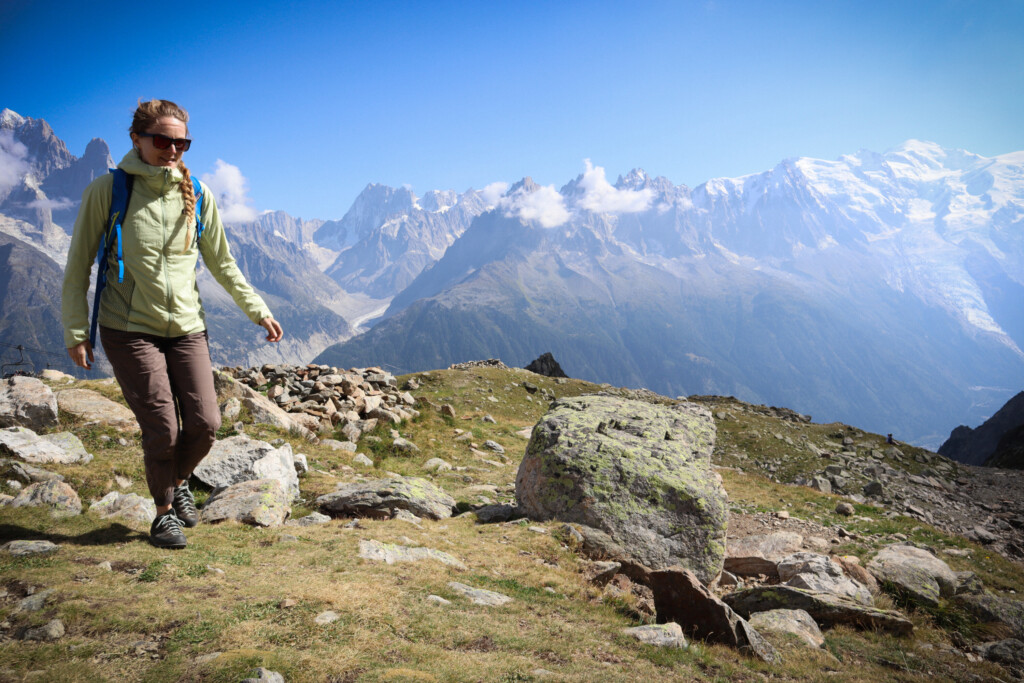
Review • Hannah Mitchell • September 12, 2023
Review: Patagonia Women’s Nano-Air Light Hybrid Hoody
Super lightweight but warm in all the right places, is this the perfect layer for summer alpine activities?
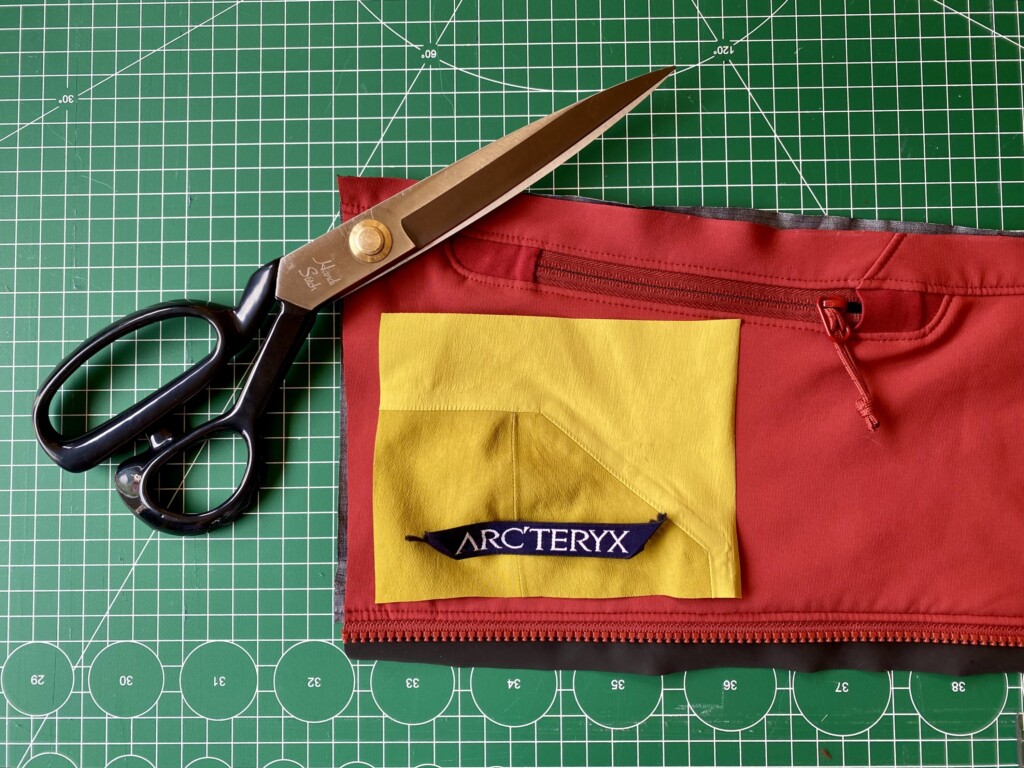
Story • Hannah Mitchell • Jul 28, 2023
Reframe, Engage, Create Change
How Arc’teryx’s ReBIRD program is engaging consumers with the concept of circularity in the outdoor clothing industry

Spotlight • Hannah Mitchell • July 24, 2023
GAME CHANGERS: The Camping Essentials Checklist For 2023
From basic to boujie, we’ve compiled a list of our camping top tips and best bits of gear to help you adventure better this summer
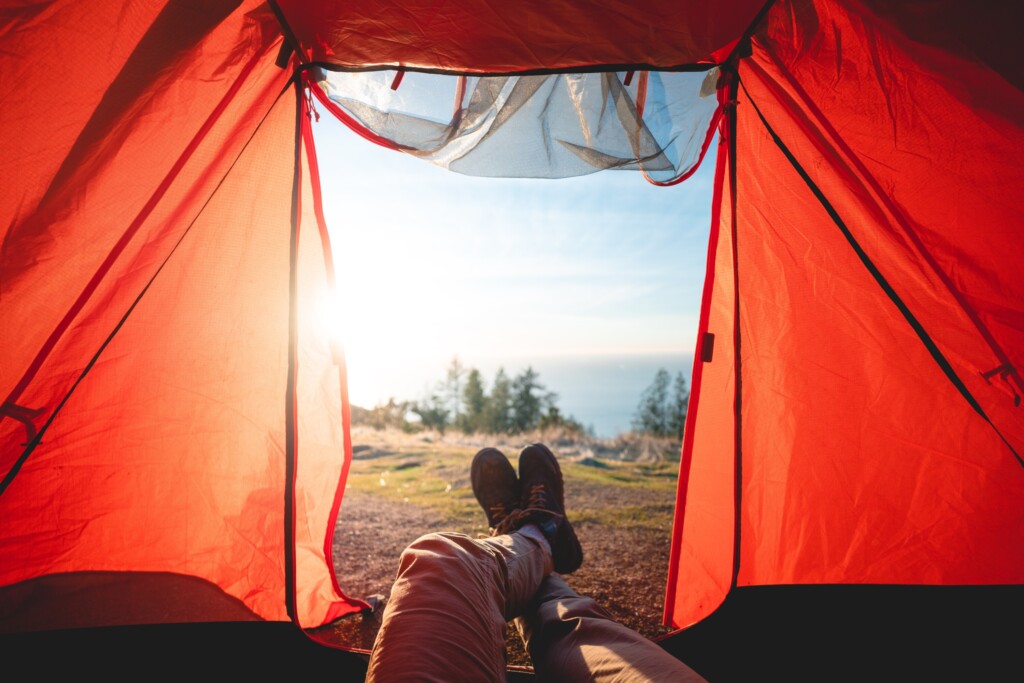
Story • Hannah Mitchell • Jun 27, 2023
The UK’s Best ‘Almost Wild Camping’ Spots For 2023
Back-to-basics camping and wild vibes… but with a few added comforts

Interview • Hannah Mitchell • Jun 13, 2023
Chasing The 14: The Kristin Harila Interview
In conversation with record-breaking Norwegian mountaineer and Osprey ambassador, Kristin Harila
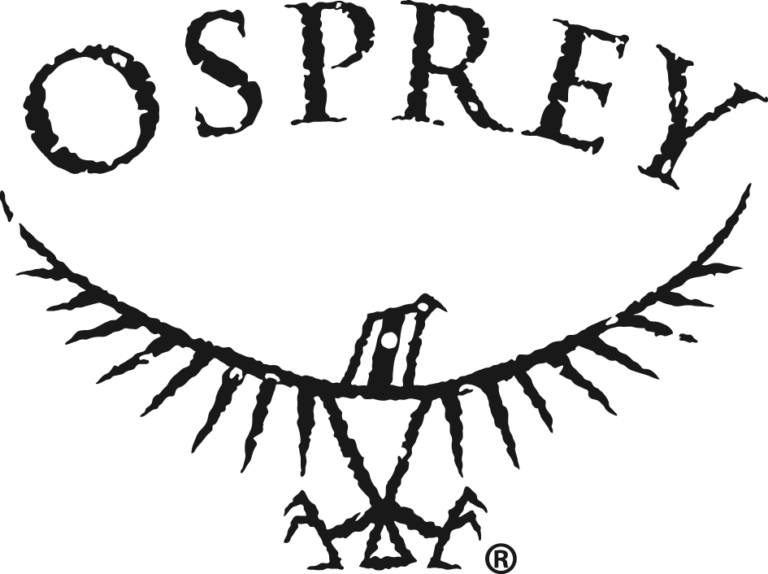
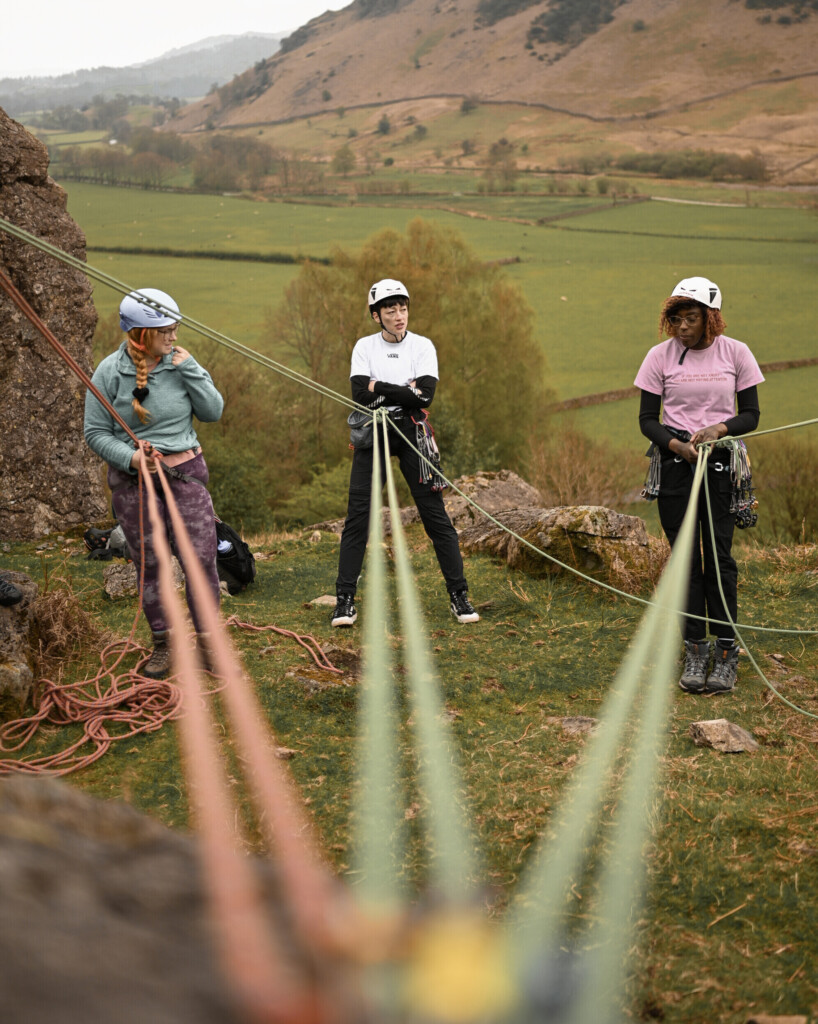
Story • Hannah Mitchell • May 31, 2023
A Greater Purpose: The Arc’teryx Climbing Academy
The Arc’teryx Climbing Academy offers a stepping stone for some, a chance to fine-tune for others, and a welcoming space for all
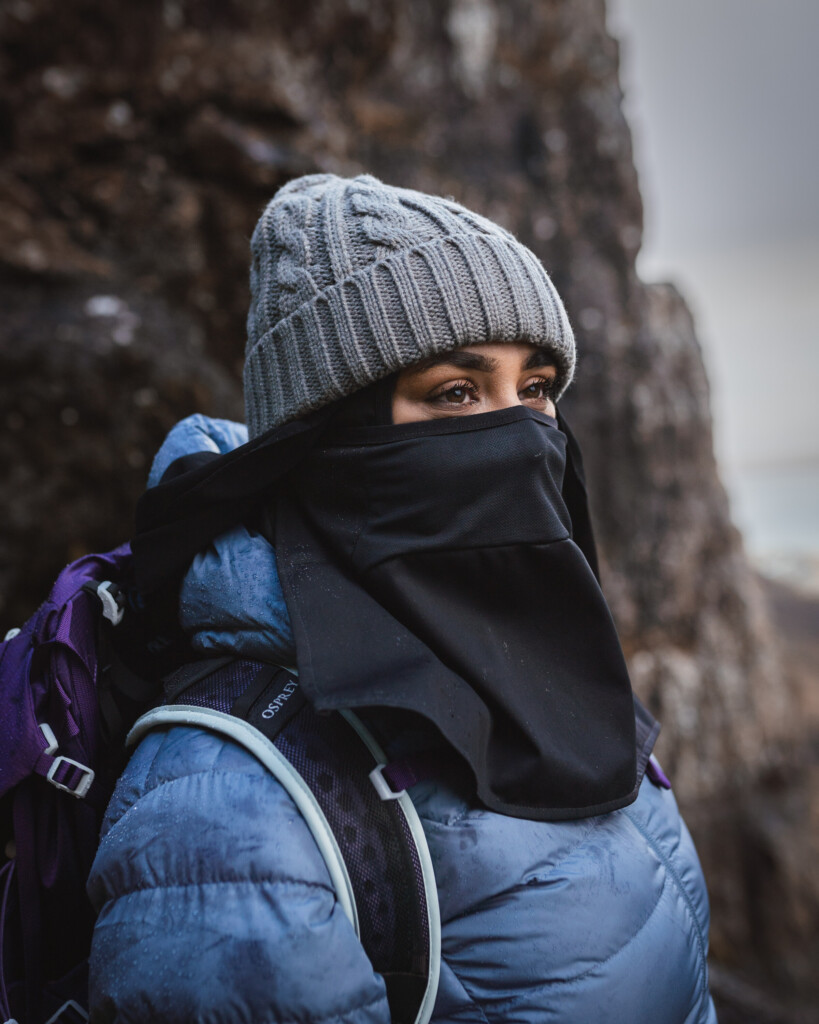
Spotlight • Hannah Mitchell • May 29, 2023
A Closer Look At The World’s First Technical Hijab And Niqab
A lack of availability of modest, technical outdoor wear for Muslim women inspired Amira Patel to turn her dream into a reality

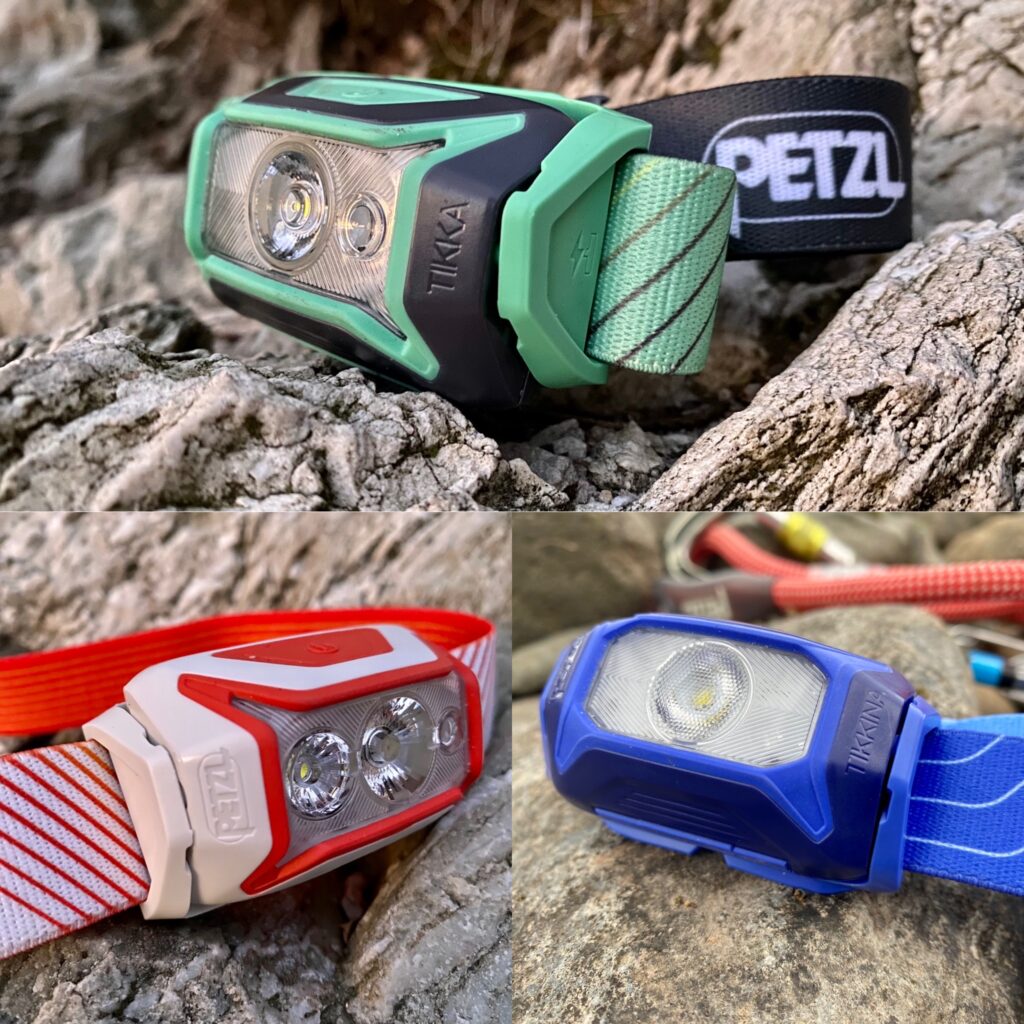
Review • Hannah Mitchell • April 12, 2023
Review: Petzl Tikkina, Tikka Core and Actik Core Headtorches
We put three of Petzl’s recently revamped lamps to the test
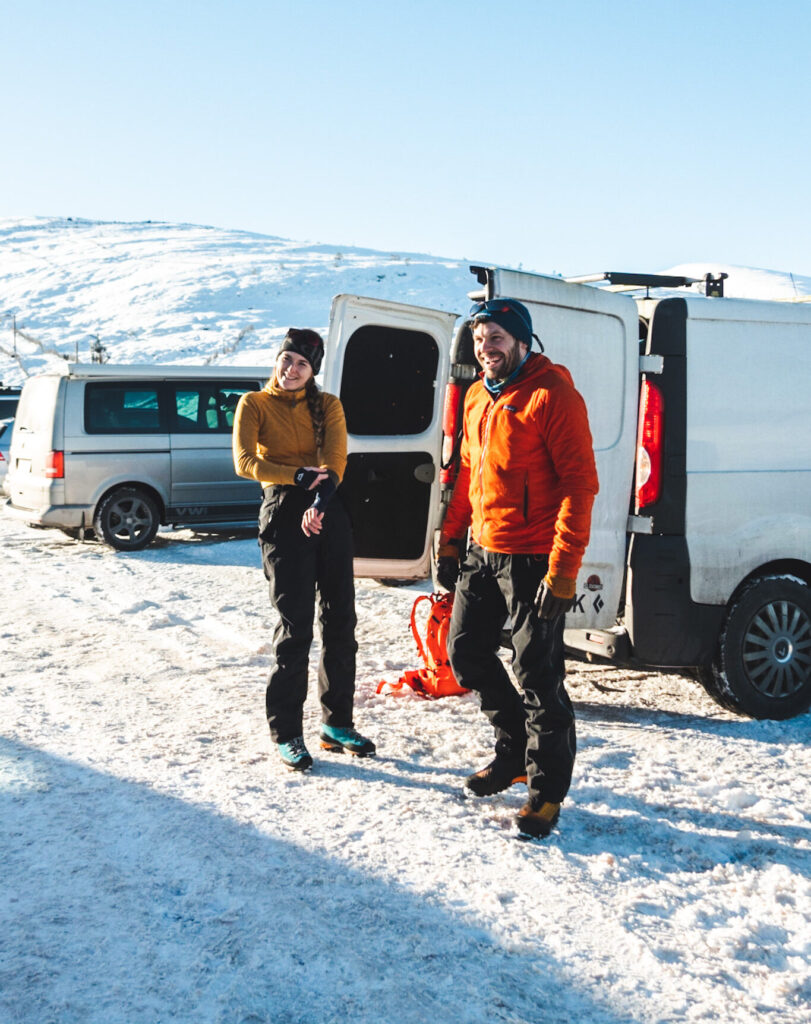
Review • Hannah Mitchell • April 11, 2023
Review: RAB Latok GORE-TEX Pro Pants – Men’s and Women’s
Breathable, well-ventilated and protective hardshell pants for technical terrain
Don’t miss a single adventure
Sign up to our free newsletter and get a weekly BASE hit to your inbox
Other posts by this author

Story • Hannah Mitchell • Jun 27, 2023
The UK’s Best ‘Almost Wild Camping’ Spots For 2023
Back-to-basics camping and wild vibes... but with a few added comforts

Interview • Hannah Mitchell • Jun 13, 2023
Chasing The 14: The Kristin Harila Interview
In conversation with record-breaking Norwegian mountaineer and Osprey ambassador, Kristin Harila


Story • Hannah Mitchell • May 31, 2023
A Greater Purpose: The Arc’teryx Climbing Academy
The Arc'teryx Climbing Academy offers a stepping stone for some, a chance to fine-tune for others, and a welcoming space for all

